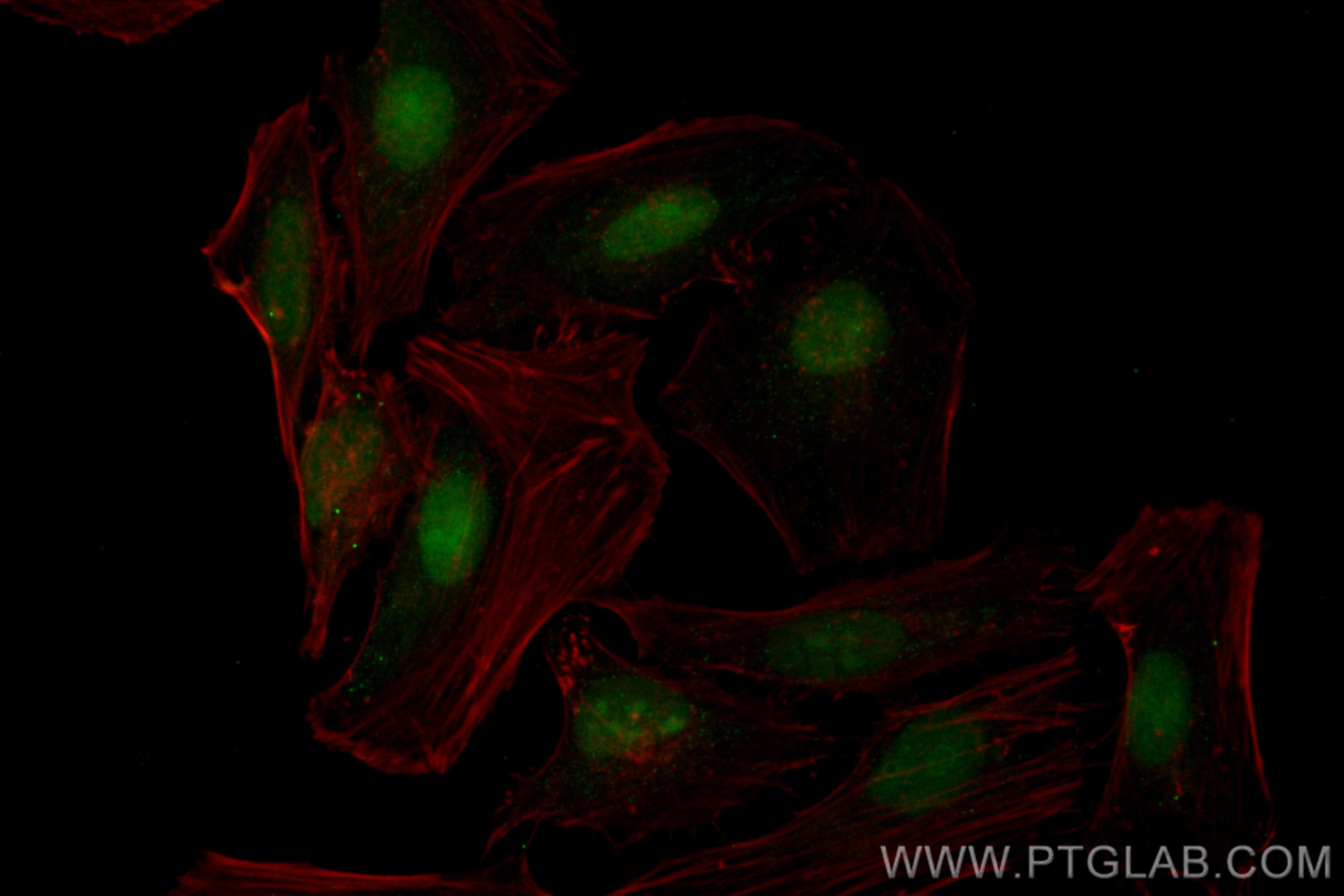Tested Applications
| Positive IF/ICC detected in | HeLa cells |
Recommended dilution
| Application | Dilution |
|---|---|
| Immunofluorescence (IF)/ICC | IF/ICC : 1:50-1:500 |
| It is recommended that this reagent should be titrated in each testing system to obtain optimal results. | |
| Sample-dependent, Check data in validation data gallery. | |
Product Information
CL488-83843-5 targets TRMT6 in IF/ICC applications and shows reactivity with human samples.
| Tested Reactivity | human |
| Host / Isotype | Rabbit / IgG |
| Class | Recombinant |
| Type | Antibody |
| Immunogen | TRMT6 fusion protein Ag10176 Predict reactive species |
| Full Name | tRNA methyltransferase 6 homolog (S. cerevisiae) |
| Calculated Molecular Weight | 56 kDa |
| Observed Molecular Weight | 55-60 kDa |
| GenBank Accession Number | BC001262 |
| Gene Symbol | TRMT6 |
| Gene ID (NCBI) | 51605 |
| RRID | AB_3673313 |
| Conjugate | CoraLite® Plus 488 Fluorescent Dye |
| Excitation/Emission Maxima Wavelengths | 493 nm / 522 nm |
| Form | Liquid |
| Purification Method | Protein A purification |
| UNIPROT ID | Q9UJA5 |
| Storage Buffer | PBS with 50% Glycerol, 0.05% Proclin300, 0.5% BSA, pH 7.3. |
| Storage Conditions | Store at -20°C. Avoid exposure to light. Stable for one year after shipment. Aliquoting is unnecessary for -20oC storage. |
Background Information
Transfer RNA (tRNA) modifications help regulate the efficiency of mRNA translation by maintaining the correct reading frames within mRNA. TRMT6 (tRNA methyltransferase 6 ), also known as GCD10 or TRM6, is a 497 amino acid protein that localizes to the nucleus and exists as a heterodimer with TRM61. Expressed in liver, brain, ovary and testis, TRMT6 functions as a substrate-binding subunit of tRNA and is thought to catalyze the formation of N(1)-methyladenine at position 58 in initiator methionyl-tRNA.
Protocols
| Product Specific Protocols | |
|---|---|
| IF protocol for CL Plus 488 TRMT6 antibody CL488-83843-5 | Download protocol |
| Standard Protocols | |
|---|---|
| Click here to view our Standard Protocols |



